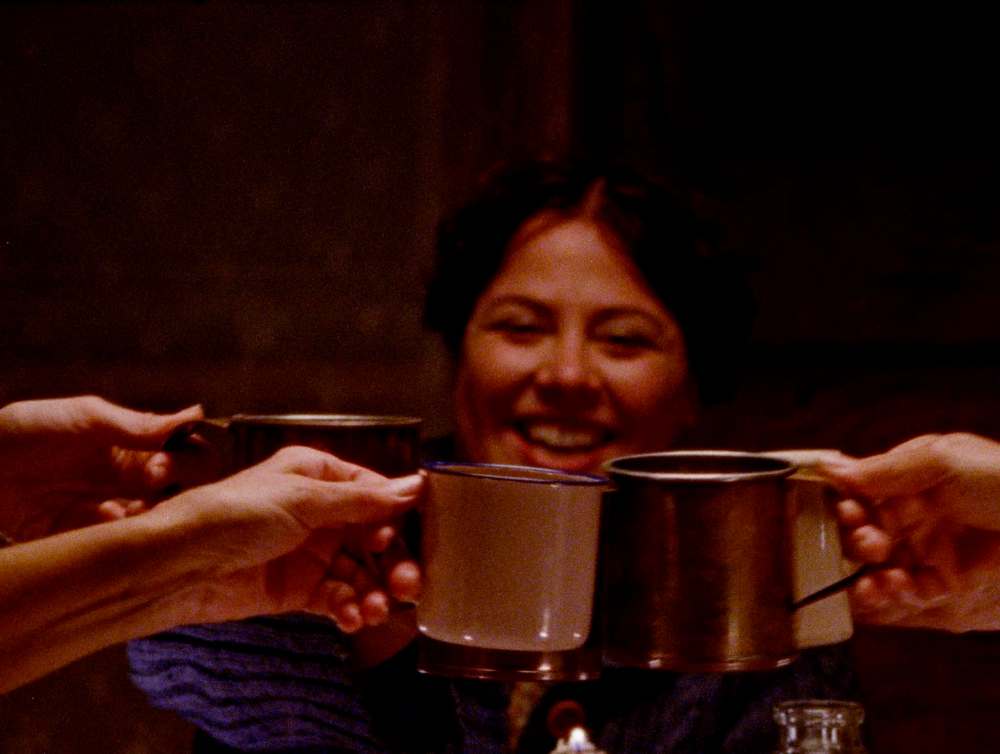Identity and innovation Light, landscape, history interwoven in Métis filmmaker's TIFF debut
Read this article for free:
or
Already have an account? Log in here »
To continue reading, please subscribe:
Monthly Digital Subscription
$0 for the first 4 weeks*
- Enjoy unlimited reading on winnipegfreepress.com
- Read the E-Edition, our digital replica newspaper
- Access News Break, our award-winning app
- Play interactive puzzles
*No charge for 4 weeks then price increases to the regular rate of $19.00 plus GST every four weeks. Offer available to new and qualified returning subscribers only. Cancel any time.
Monthly Digital Subscription
$4.75/week*
- Enjoy unlimited reading on winnipegfreepress.com
- Read the E-Edition, our digital replica newspaper
- Access News Break, our award-winning app
- Play interactive puzzles
*Billed as $19 plus GST every four weeks. Cancel any time.
To continue reading, please subscribe:
Add Free Press access to your Brandon Sun subscription for only an additional
$1 for the first 4 weeks*
*Your next subscription payment will increase by $1.00 and you will be charged $16.99 plus GST for four weeks. After four weeks, your payment will increase to $23.99 plus GST every four weeks.
Read unlimited articles for free today:
or
Already have an account? Log in here »
Hey there, time traveller!
This article was published 08/09/2021 (1533 days ago), so information in it may no longer be current.
Rhayne Vermette’s first feature film is lush and sparse all at once. The Métis filmmaker, born and raised in Notre Dame de Lourdes, set out to try something new with Ste. Anne and, thus far, her efforts have been met with critical acclaim.
Ste. Anne was nominated for Best First Feature Film at the Berlinale festival in March and the project will be making its North American première at the Toronto International Film Festival on Monday and the New York Film Festival next month; with a full slate of international festival appearances scheduled for this fall.
“It’s pretty wild,” Vermette says of the reception. “It was a complete learning experience, I never anticipated the success that we got.”
Vermette fell into filmmaking while studying architecture and has been making experimental, artistic shorts and animations for the last decade. After releasing Domus, a stop-motion meditation on architect Carlo Mollino, in 2017 she decided to shift gears away from animation — which she describes as a “really isolating way to make a film” — and towards a bigger picture.

“I felt like a chapter was closed in my creative world,” she says. “And so I started thinking about collaboration and longer-form storytelling and so the feature film sort of came out of those challenges I was setting for myself.”
Ste. Anne follows the story of Renée, played by Vermette, who returns home suddenly after an unexplained four-year absence. Her family — many of whom are played by the filmmaker’s real-life kin — and young daughter, Athene, are unnerved by her arrival.
Shot on grainy 16 mm film, the eerie narrative is brought to life by lingering prairie landscapes and scenes of tense family gatherings. The infrequent dialogue is presented in French with subtitles and the soundscape relies heavily on ambient noise — crickets chirping, boots crunching through grass, fire crackling and cutlery clinking against china.

“What motivates me is beauty and every shot comes from that place,” Vermette says. “The sound is killer, too.”
The narrative was inspired by Vermette’s own experiences as a Métis woman navigating the largely white, male film industry and how her identity has been portrayed historically — things she started grappling with during an Indigenous film incubator program.
“They were really pushing me towards things like fiddle music and jigging and these things that don’t necessarily reflect who I am or who my dad is or who my brother is,” she says. “That kind of ignited this thinking about the Métis and what the nation means to me, historically, geographically, spiritually.”
The project was filmed over two years with an all-female and mostly Indigenous crew in Winnipeg and small towns throughout southern Manitoba. Much of the location scouting took place while riding in the passenger seat of her dad’s pickup truck and while Ste. Anne isn’t meant to be autobiographical, the film visits many places connected to Vermette’s childhood and family history.

“I was really taking inspiration from the land,” she says. “A lot of people do these weird land acknowledgements before events and, to me, this is a more personal acknowledgement of the places I come from.”
When it came to story, Vermette’s first lesson in feature filmmaking was that her vision is best realized through improvisation.
“I spent all this time writing a script and then with the realities of who my actors were and my budget and all that stuff, the first thing I did was throw out the script,” she says. “A lot of the nicer moments in Ste. Anne just happened when we all agreed to show up at the same place and see what the light was doing.”

She’s applying that lesson, along with many others, to her next feature project Levers, which is currently in the research and development stage.
For Vermette, the strength of Ste. Anne lies in how it was created: with friends and family who had little-to-no prior experience making a full-length art film. “Because we were coming at it green, we didn’t know how to do it in the proper industrial way and there was a lot of space for innovation and (self-determination).”
So far, Vermette and the rest of the crew have been unable to attend any of the film’s premières owing to the pandemic. On Monday, they will be able to see Ste. Anne in theatres for the first time during its TIFF debut in Toronto. A digital viewing is available on Sept. 14 at 8 p.m. Visit tiff.net/events/ste-anne for more information.
eva.wasney@freepress.mb.ca
Twitter: @evawasney


Eva Wasney has been a reporter with the Free Press Arts & Life department since 2019. Read more about Eva.
Every piece of reporting Eva produces is reviewed by an editing team before it is posted online or published in print — part of the Free Press‘s tradition, since 1872, of producing reliable independent journalism. Read more about Free Press’s history and mandate, and learn how our newsroom operates.
Our newsroom depends on a growing audience of readers to power our journalism. If you are not a paid reader, please consider becoming a subscriber.
Our newsroom depends on its audience of readers to power our journalism. Thank you for your support.





